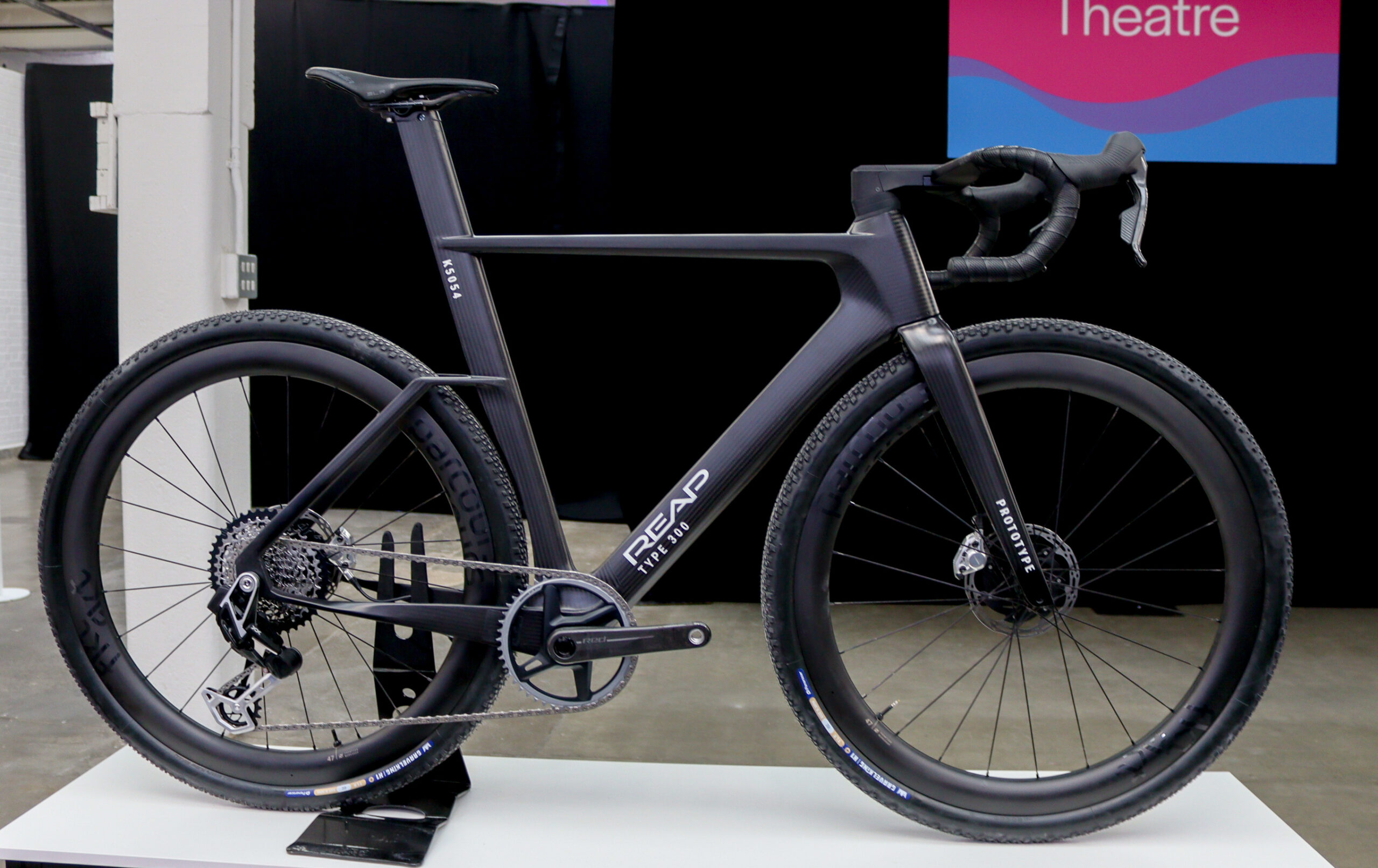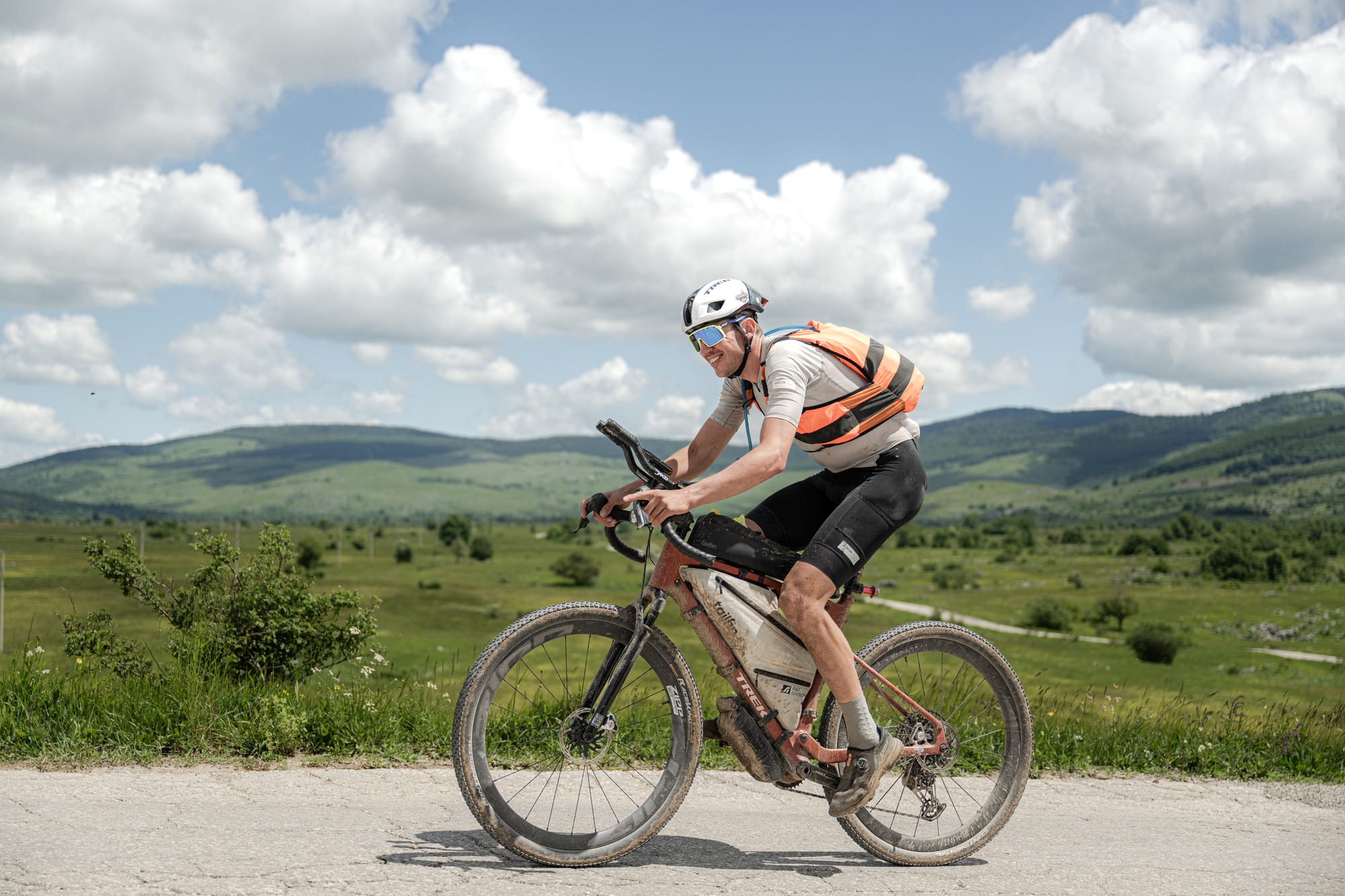New bikes typically take months, sometimes years, to design. Often, by the time a brand launches a new model, they're already working on – or at least planning – the next iteration.
But, as always, there are exceptions, and Reap has proven that with its new prototype gravel race bike. In just seven weeks, the British brand conceived, designed, 3D-modelled, and built a fully rideable prototype that looks as futuristic as it is functional. Featuring clearance for 50 mm tires, aero profiling throughout, bold new seat and chain stay designs, a "forged" carbon seat mast topper, and a biocomposite-reinforced carbon fibre frame for improved compliance, the Type 300 has an eye on both the latest trends and the future of gravel racing.
Reap is a family-run business founded in 2014, and the company behind this striking new prototype. Run by Martin Meir and his sons from their Staffordshire factory, Reap specialises in building high-performance, made-to-order bikes entirely manufactured in the UK. Their range currently includes the Vekta, and the Vulcan triathlon bike. The Type 300 will soon join the lineup, and much like its siblings, it combines Reap’s signature aesthetic and target ride characteristics with striking lines and promises of aerodynamic performance coupled with targeted compliance for a more forgiving race bike.
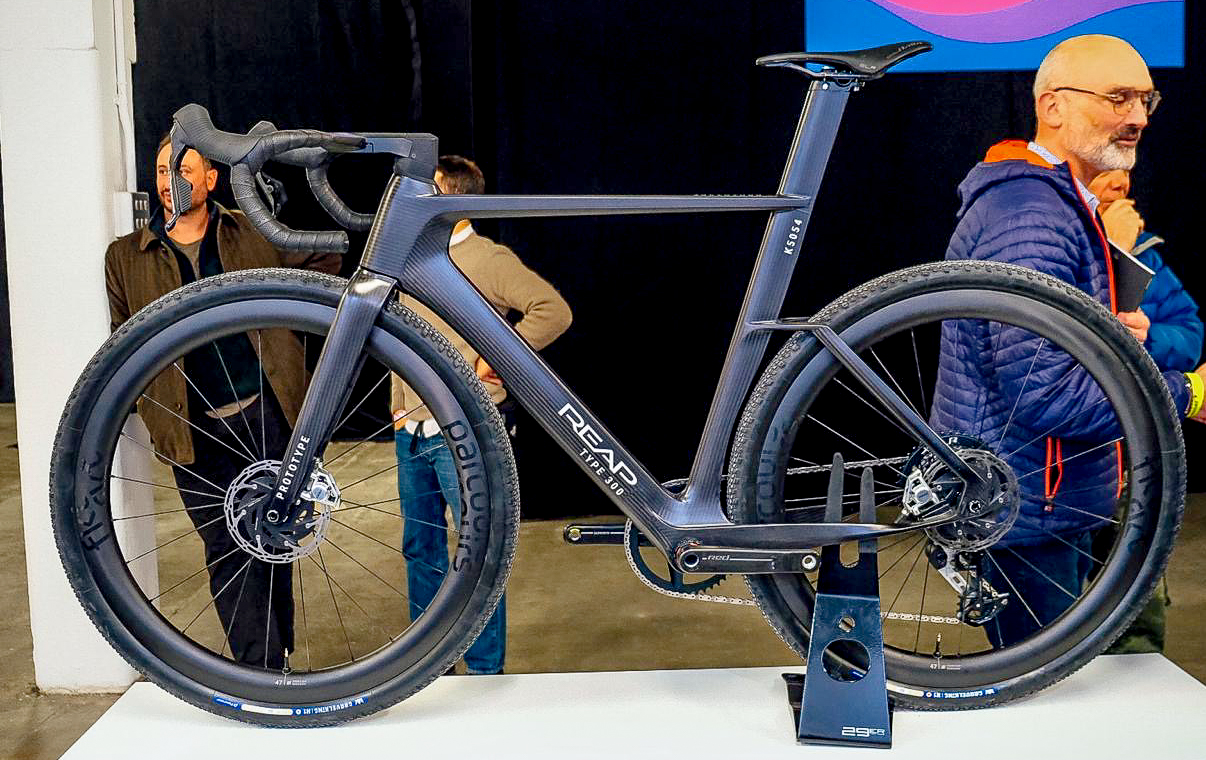
The Type 300 seen at Rouleur Live (the UK-based bike show) is just the first prototype of Reap’s new gravel bike. Given Reap’s low-volume, made-to-order model, whether or not it goes into production will depend on demand, but we spoke to Ben Meir, Reap’s General Manager, to get the inside story on that incredibly short, seven-week design process. As suspected, the timeline behind the Type 300’s creation is as unique as its design, with Meir recalling how, as recently as the end of September, the Type 300 was nothing more than a concept in his mind. Although Meir had long been considering a Reap gravel bike, the team hadn't started CAD modelling or even finalised the design brief.
Just seven weeks later, a fully rideable prototype was on display at Rouleur. That prototype demonstrated what customers can expect should they order a Type 300, but it also demonstrated something other, larger, mass production manufacturers are unable to do. Reap is a small, family-run bike company, manufacturing its own frames from a warehouse in Staffordshire. You might not have even heard of Reap before last week, but despite all that – perhaps thanks to all that – Reap could in less than two months design and make a gravel bike right up to date with the latest market trends and demands, with complex design challenges, and reimagined ride characteristics.
All in 52 days work
It was a LinkedIn post from Ben Meir in mid-September that first caught my attention: Reap was planning a gravel bike and Meir had asked his followers for geometry requests. A few messages later, he revealed Reap’s much more ambitious plan: a rideable prototype by mid-November. Admittedly, it was a long drop for me, and my thought process went something like this:
A prototype? Ok! So ... Wait, a carbon prototype? Yeah!
A rideable carbon prototype? Yeah!
Of a bike that isn’t even sketched yet? Yeah!
In 7 weeks? Yeah!
Woah!
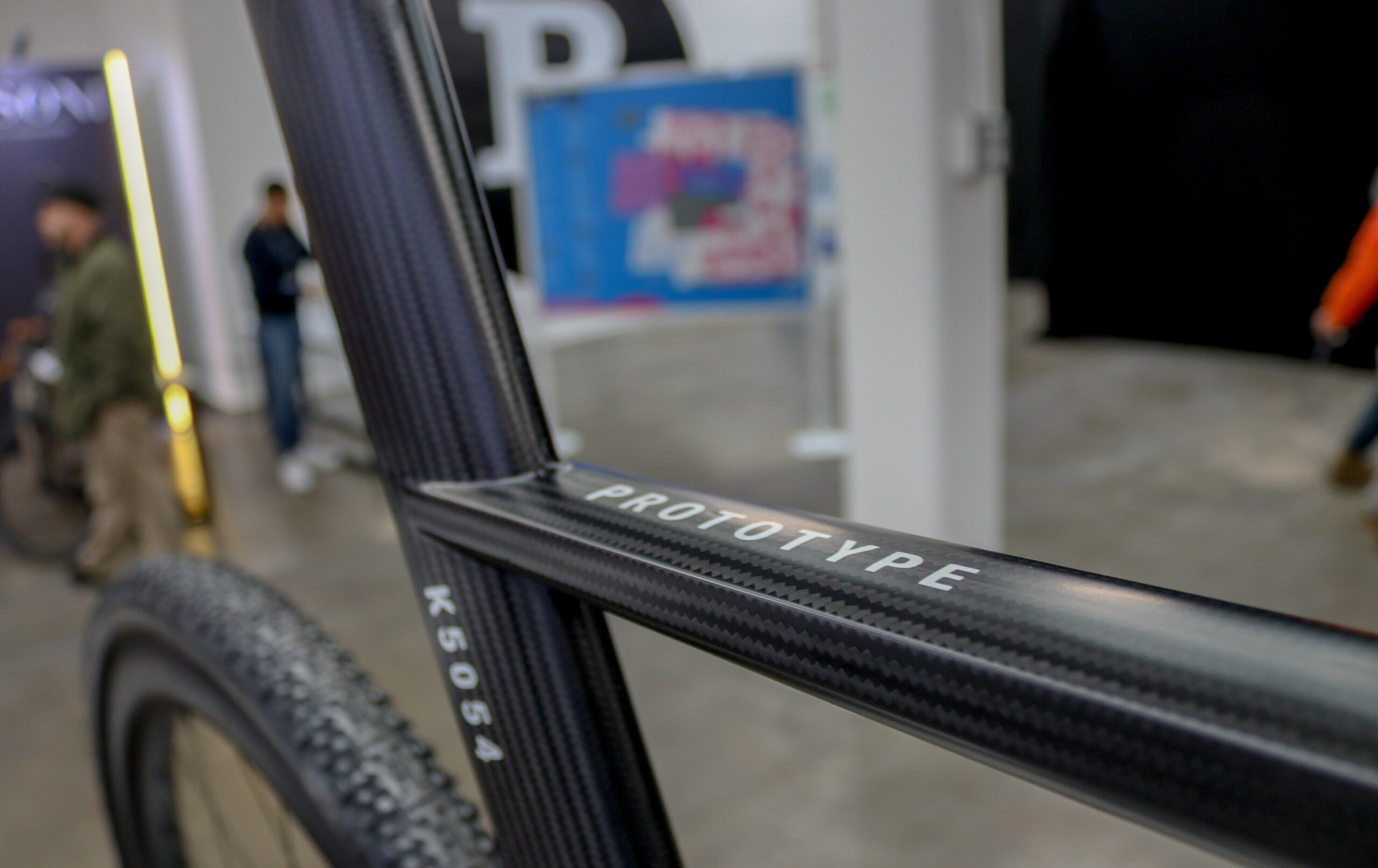
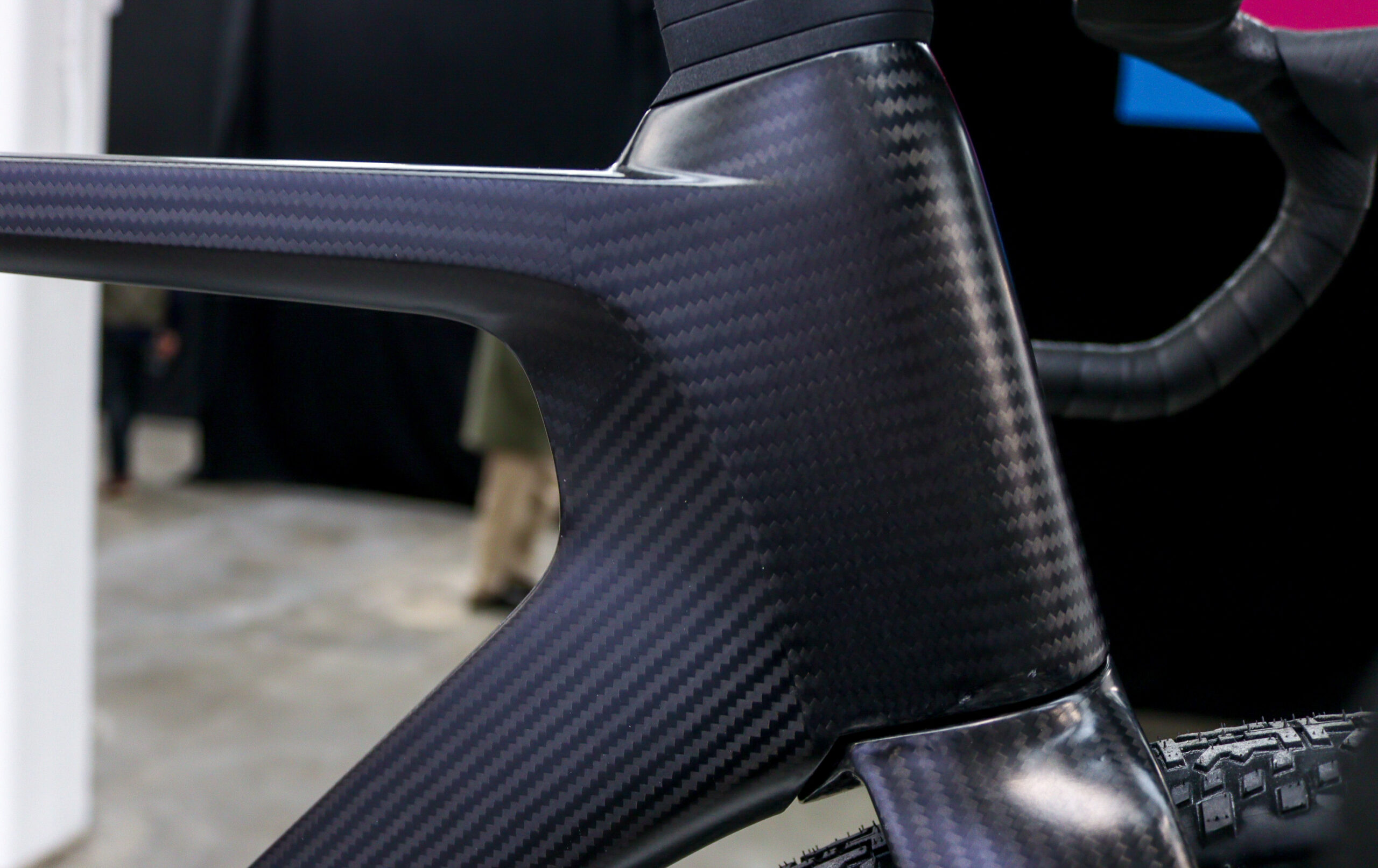
Talk is cheap, though, but with such an aggressive timeline, and Reap’s history in disregarding accepted norms, my interest was piqued. By September 23rd, the design brief was finalised, and the 3D modelling and initial designs began on the same day. Meir had been refining ideas for the rear triangle and fork design for over a year, so it was a matter of turning these concepts into computer models – and fast.
Of course, shortcuts, or efficiencies, would always help on such a short timeline, many of the tube profiles and aero sections from Reap’s road race bike, the Vekta, were carried over and enlarged for the new gravel platform. This offered two main benefits: it ensured the Type 300 retained the Vekta’s (and Reap’s) signature design language, and perhaps more importantly, it meant that some of the CFD (Computational Fluid Dynamics) work had already been completed. That said, Reap still needs to take the Type 300 to the wind tunnel, where the brand prefers to carry out its aero validation work.
With the initial models created, the next step was Finite Element Analysis (FEA) to assess the overall design, especially in the complex rear triangle, and ensure that it could withstand the stresses of gravel riding while maintaining strength, durability and performance. That said, Meir did explain that more analysis work is required on this prototype frame. “We are confident in the design,” he told Escape Collective before adding “but that’s part of the point of a prototype,” when asked about the suitability of using such a unique design, which features sharp angles and tight radius corners, on a gravel bike with all the additional stresses and impacts that come with that mixed surface discipline.
While the Type 300 was well underway, it was still only a virtual model. Reap needed moulds to create a rideable prototype for Rouleur in mid-November.
Moulds and materials
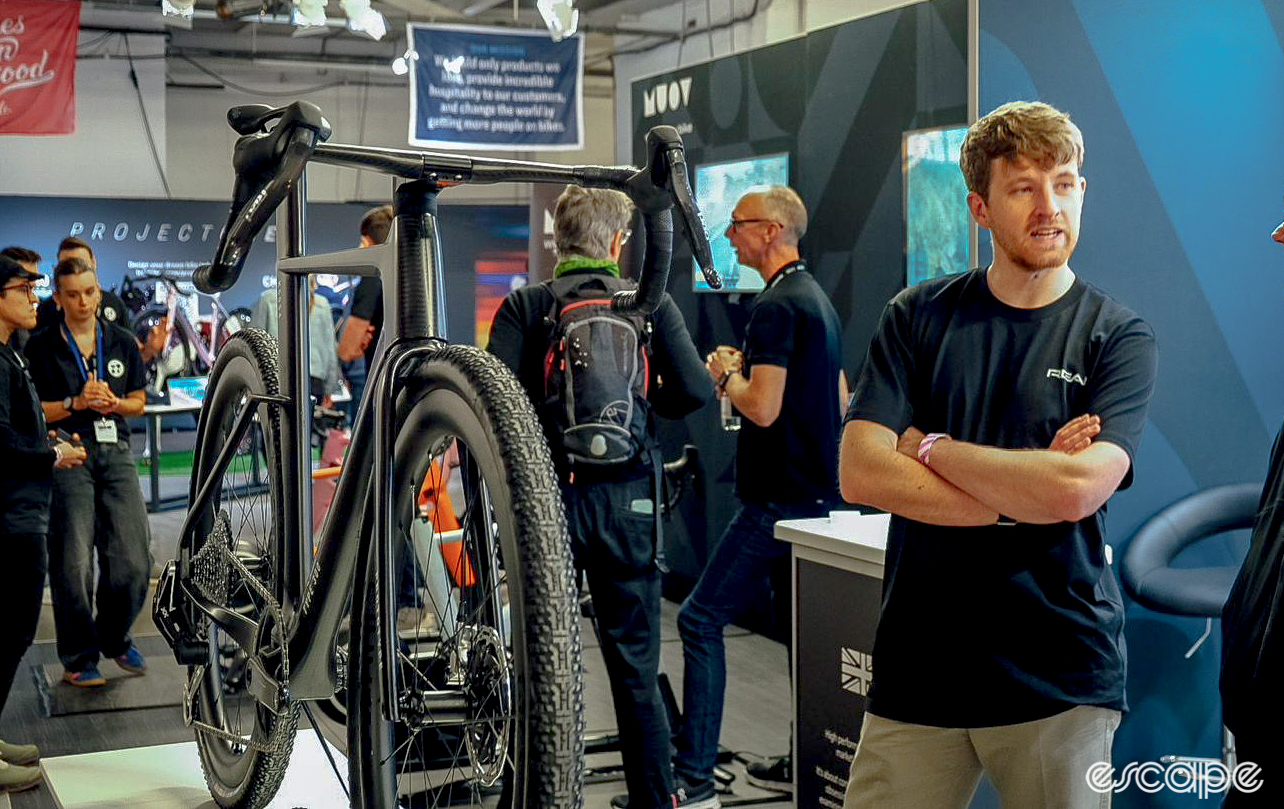
Reap uses a split mould approach, with each side of the bike laid in separate moulds. To produce these moulds in-house, the team begins with a master pattern CNC-machined from high-density epoxy foam. This foam is precisely shaped to the exact dimensions of the frame, and once refined, it is coated with a tooling gel to create a smooth and durable surface, which is then used to create the mould shell for each side. Layers of carbon fibre are then applied over the foam in precise orientations to ensure strength and rigidity. The whole assembly is vacuum-bagged and cured in an autoclave to form a solid carbon fibre mould. Once complete, the foam is removed, the carbon mould is polished and inspected, and it is ready for the first frames. Once laid with carbon, the two sides of the split mould are then aligned, secured, sealed, and cured under pressure to ensure a tight, accurate join for the carbon fibre frame.
With the moulds ready, there is the not-so-small matter of what goes into them. For the Type 300, Reap partnered with Scale Advanced Biocomposites, a French company developing bio-based reinforcement materials designed to be blended with carbon fibre to enhance performance, reduce costs and slash greenhouse emissions. Scale’s site says it is focused on “decarbonising advanced composites.”
While bio-based carbon fibre alternatives are nothing new, they’d so far come with a performance penalty, be that weight or stiffness, and sometimes both. But because Scale's fibres aren't simply an additive to carbon frames but actually replace some of the carbon that would otherwise have gone into a frame, they can "improve vibration damping" according to the company, without adding weight or sacrificing stiffness.
Reap didn’t want to divulge too much information on the exact make up or ratio of carbon and biocomposites it is using, but Scale offers its products as either rovings (bundles of fiber strands) or filaments (continuous strands in a yarn), which can be combined with other fibers to tune stiffness and strength characteristics with less environmental impact. Scale claims its COR|Power damping filament “reduce the effects of vibration and harshness in carbon fibre composites by up to 30% when incorporated at 10% by weight.”
Reap has integrated Scale’s materials into its Type 300 carbon layup. This hybrid blend aims to improve the bike’s damping characteristics and offer a smoother ride without compromising outright race performance. Reap hopes this material integration will enhance ride compliance on gravel surfaces, resulting in more efficient performance across rough terrain and potentially even better power transfer.
Breaking design rules
That design process culminated in the Reap team laying the biocomposite-reinforced carbon into the moulds early last week. Reap does not use mandrels, a common method adopted by many frame manufacturers, where carbon is first wrapped around an internal support (the mandrel), which is then inflated to compress the carbon in the mould while maintaining the internal shape of each tube. Instead, Reap prefers to lay the carbon directly into the mould. According to Meir, this approach ensures “really good continuity of fibres all the way from the rear triangle … up to the head tube,” unlike the mandrel method, which essentially pieces together individual sections.

When asked if such designs are fit for purpose in a gravel setting, Meir claimed this method allows Reap to deliver more challenging tube profiles others might not even consider, including sharp angles and tight-radius edges, without the risk of "pitting" – when air pockets exist at the edges of a tube where the resin has failed to fill properly, potentially leading to failure. Meir also explained these more complex profiles require considerably more time to create, which makes it impractical for mass manufacturing; he said Reap’s low-volume model is a key element in making the designs more practical.

That said, other carbon experts Escape Collective spoke to showed some scepticism for the viability of the designs, and so we're keen to see how Reap's testing progresses.
One thing that stands out in speaking with Meir is that Reap’s bold designs are not just for show. Unlike traditional teardrop-shaped aero tubes, which feature a deep profile and sharp trailing edge that can cause turbulent airflow, a Kammtail profile has a truncated rear end; imagine chopping the trailing edge off a teardrop profile. This design mimics the smooth flow of a full aero profile thus offering many of the same aerodynamic benefits, but in a lighter tube that’s more stable in crosswinds due to its significantly shallower profile. Kammtails are widely used in bike frames, but even here Reap pushes boundaries.
Meir claims that the tighter the radius on the trailing edges of these Kammtail profiles are, the better the Kammtail profile’s aerodynamic efficiency. However, some manufacturers, like Wilier, take a near-opposite approach. Wilier rounds the trailing edges of its Kammtail tubes, arguing that while this design is less effective in stable, low-yaw conditions, it performs better across a wider range of yaw angles in real-world wind conditions.

The Type 300’s striking seat stays and chain stays are another area where Reap has used more aggressive shaping, this time in a bid to incorporate more compliance rather than purely an aero intervention. The seat stays exit the seat tube horizontally in a shelf-like design, akin to modern time trial bikes, before turning sharply downward toward the rear dropout.
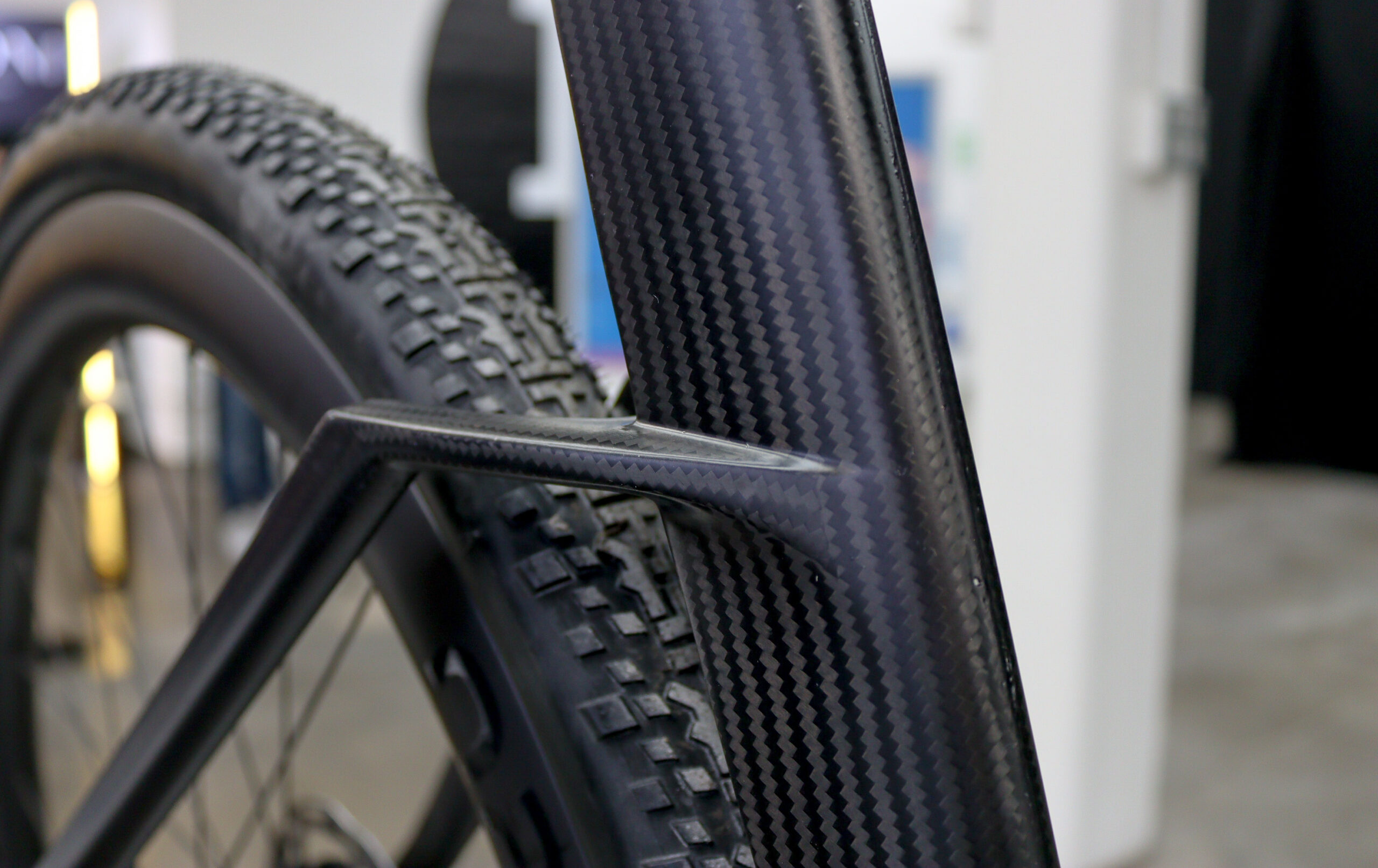
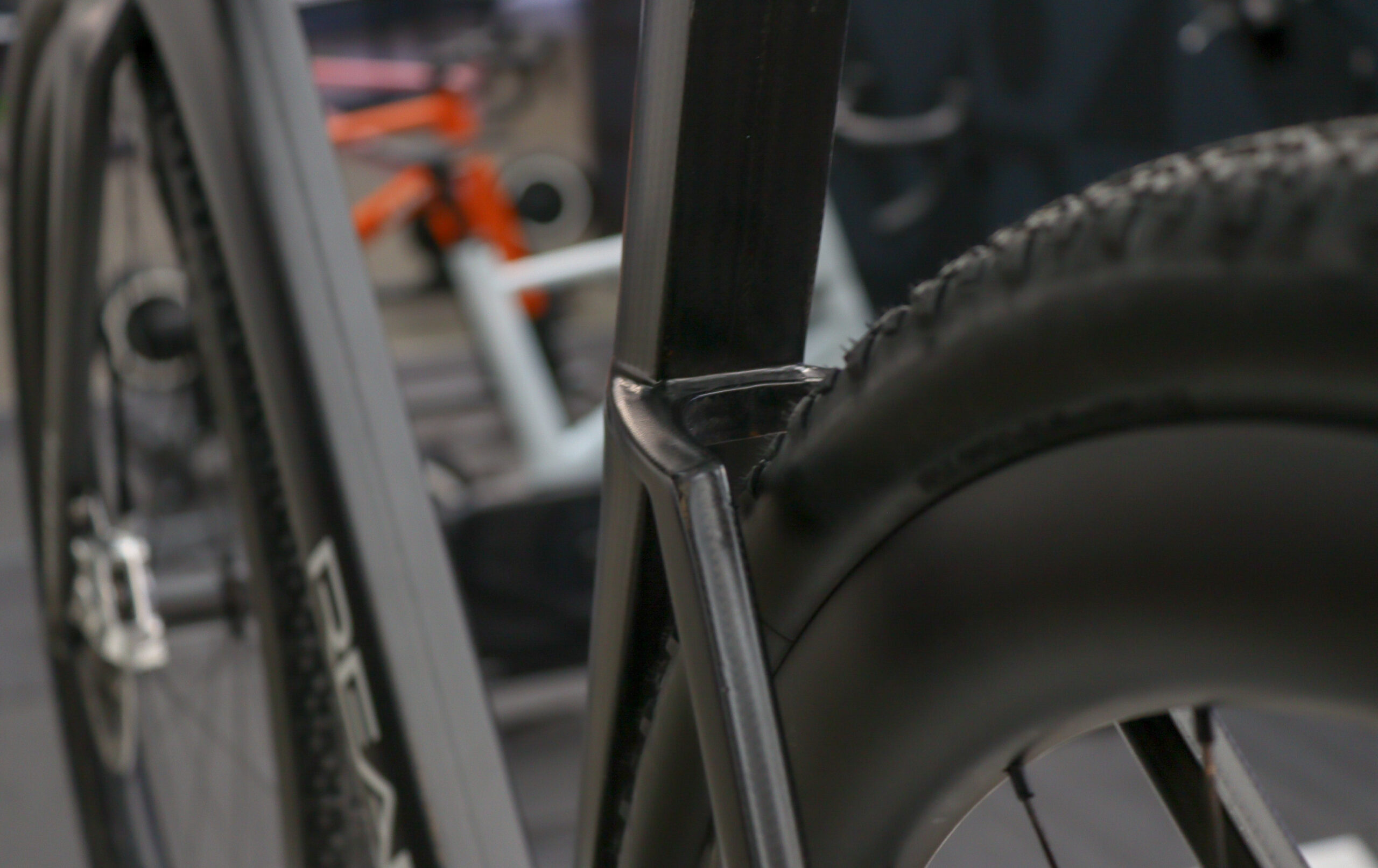
The chain stays are equally striking: they start as an exceptionally tall and thin profile where they exit the bottom bracket before rotating to adopt a shallow and wider profile as they run towards the rear dropouts. The result is a fascinating design that looks as though the tube has been heated and twisted into its unique, deformed state.
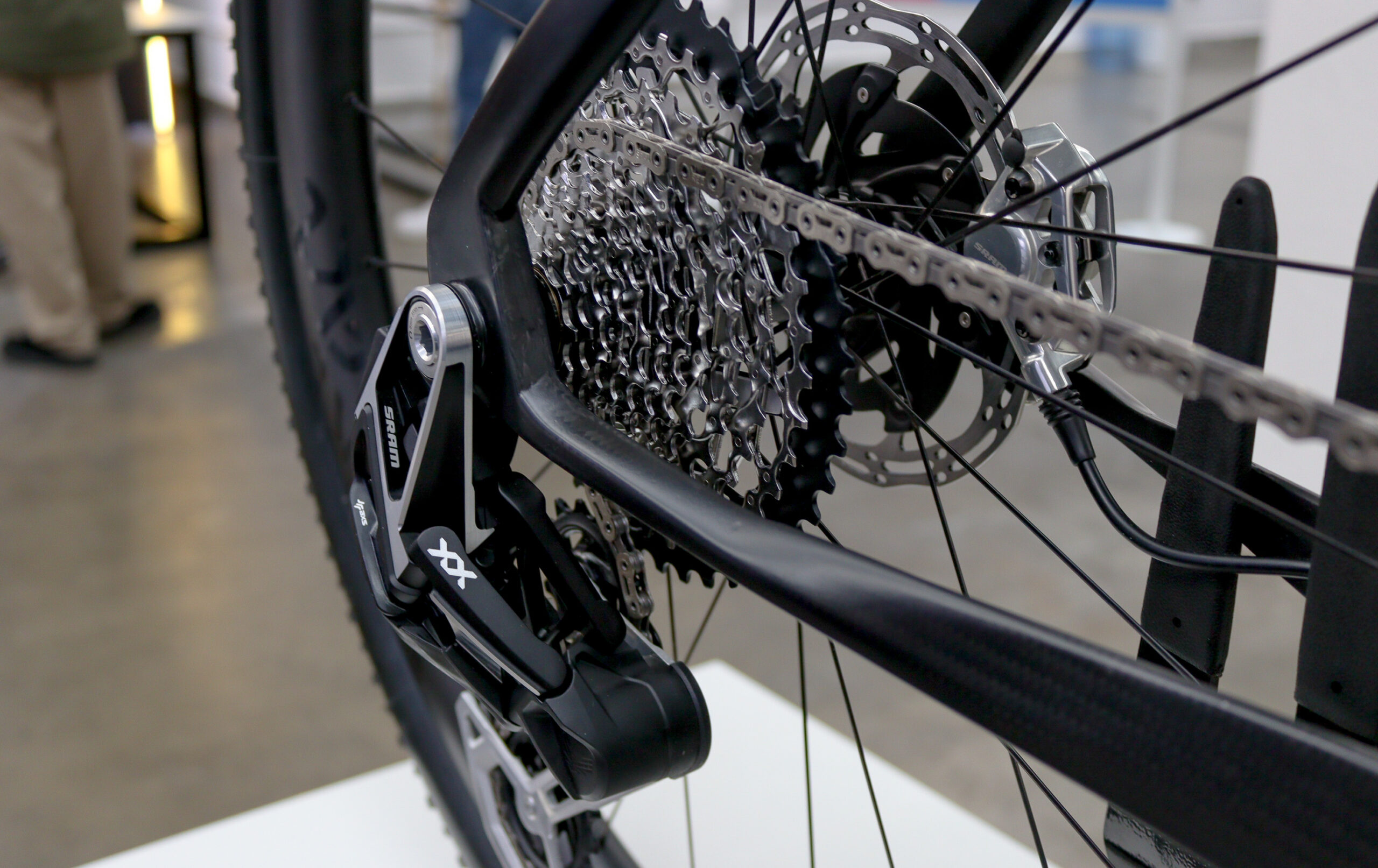
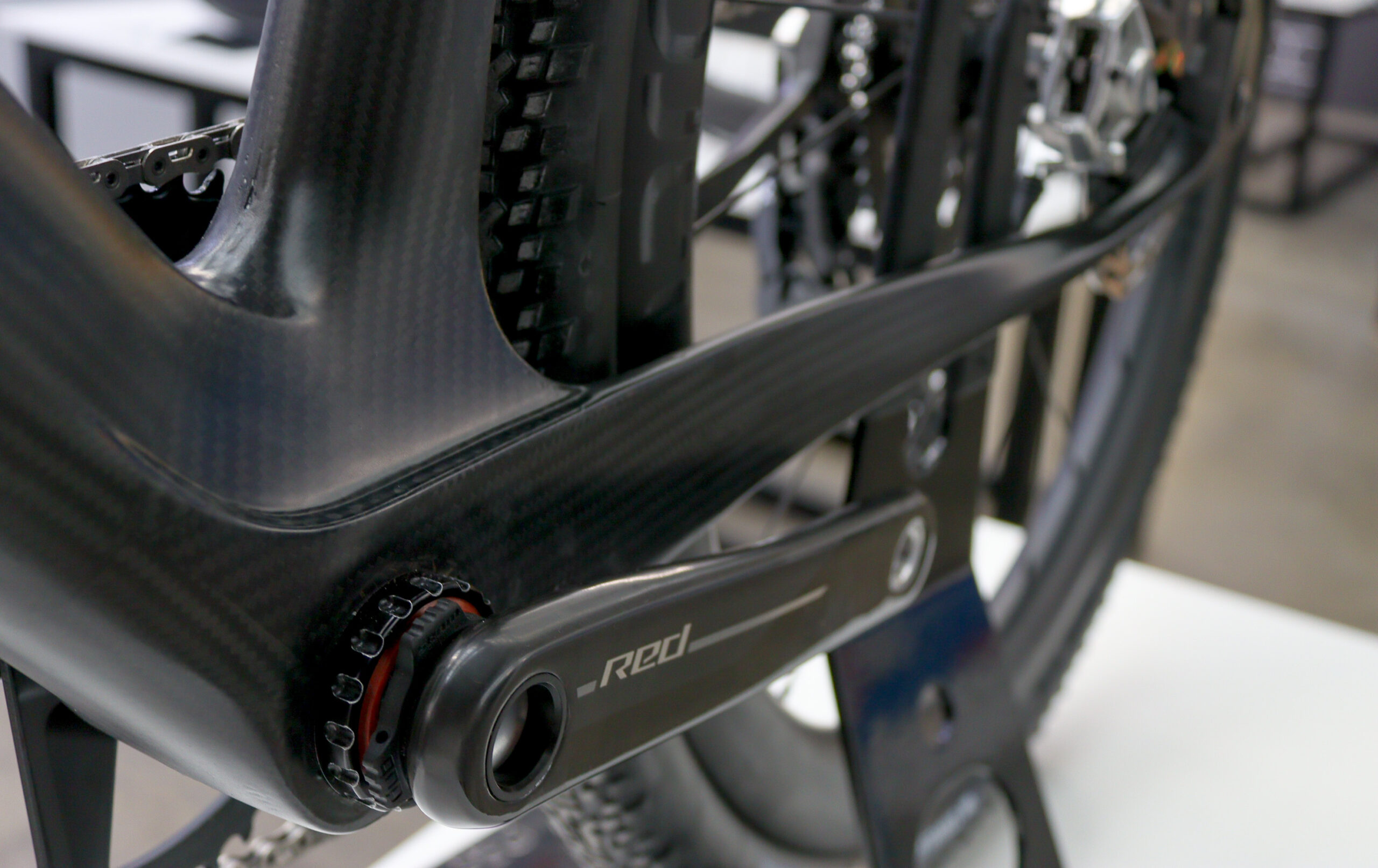
These bold designs aren’t just for show, though. Meir explains each has been chosen to meet compliance and performance targets along with delivering on other demands from the gravel race market. Again, the chain stays are perhaps the best example of this balancing act with the taller profile at the bottom bracket end combining clearance for both 50 mm tyre on the inside and 50-tooth chainrings on the outer, plus the compliance Reap claims should be evident in the final frame.
Quick to build means responsive to trends
Once the mould was complete, it was vacuum-bagged and placed in the autoclave for curing. By Wednesday morning last week, the Type 300 frame had emerged from the mould, and after seven weeks of frantic development, Reap’s gravel bike was a tangible reality. But with just 36 hours left before the seemingly impossible Rouleur deadline they had set in September, it wasn’t yet a fully assembled bike.
Before the team could begin the build process, they had to inspect the frame, complete any trimming, apply lacquer, and add the decals. The bike was then assembled and all completed with hours to spare. There’s a host of sayings that enter my mind, but I think I land somewhere between Reap maximising every opportunity to innovate until the deadline, but I’m also conscious of “haste makes waste,” and “Don’t rush to finish; rush to get it right."
Either way, the Type 300 prototype displayed at Rouleur Live last week, which Reap claims offers a glimpse into the future of gravel bikes isn’t the end result, is just that: a prototype. Reap has been wise to avoid any specific claims and left flexiibilty to adjust the current iteration before a full launch.
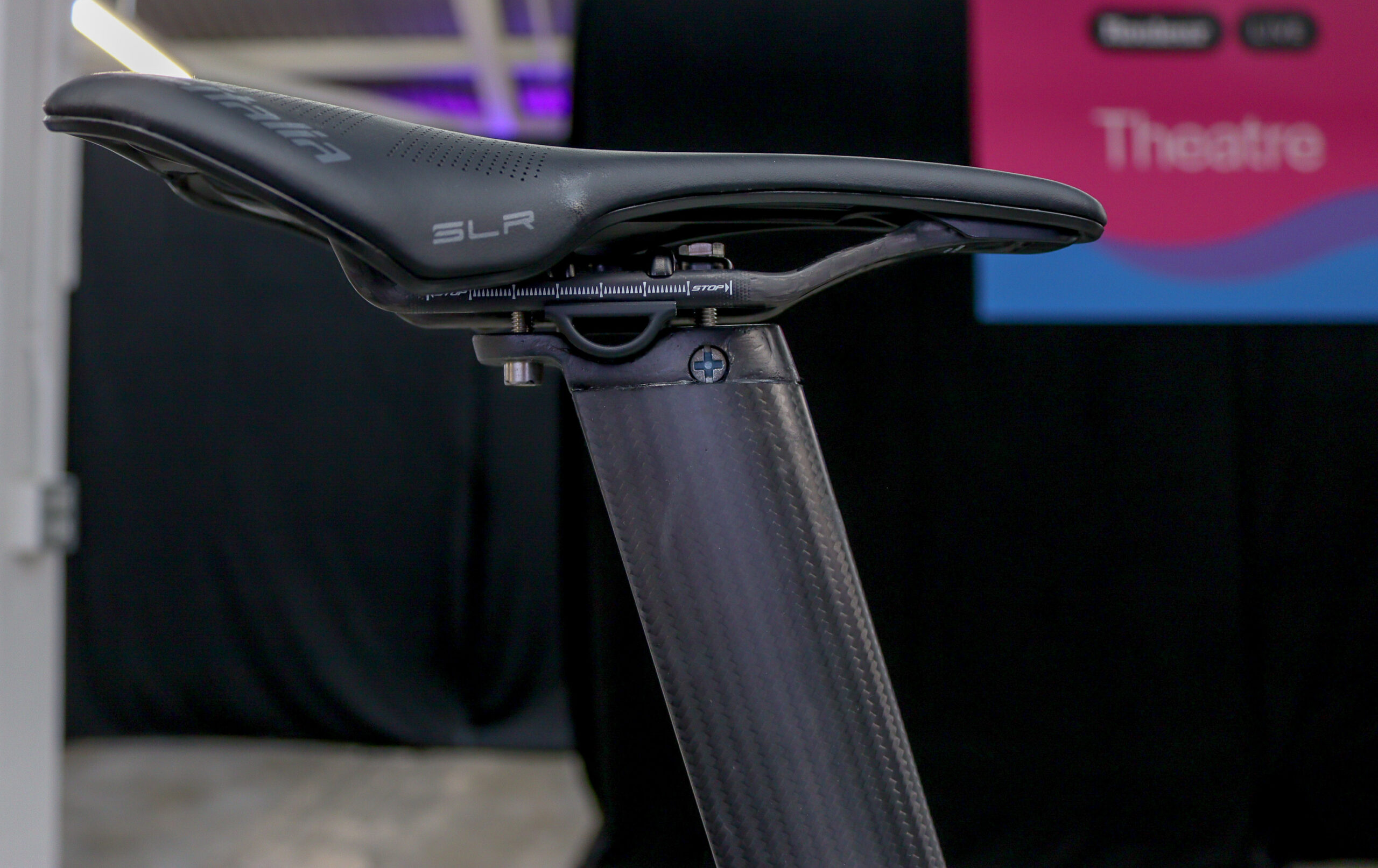
That’s obvious in the integrated seat mast on the Type 300 on display last week; the production versions will likely have a more traditional adjustable setup. Far from taking shortcuts to meet the prototype deadline, this ISP design was quite the opposite, as Meir explained, pointing to the "forged" composite carbon fibre topper for the frame instead of a machined aluminium one. The topper is made by combining chopped carbon fibres with resin and applying heat and pressure to form complex, strong, and usually lightweight components, similar to how some composite pedal bodies are made. Meir points out that, compared to the 150 g of an aluminium topper, this decision saved around 125 g as the forged carbon version weighs just 25 g. Reap 3D-printed the tools required to forge the topper, which is bonded directly into the seat tube for a seamless integration.
But as impressive as all that is, the underlying achievement is still Reap’s ability to take a process that usually takes months, and in some cases years, and complete it in just seven weeks, a speed which led it incorporate aspects such as increased tyre clearance that have caught larger manufacturers floundering this summer.
Reap, like the rest of the industry, observed the growing trend towards wider gravel and even mountain bike tyres for gravel racing over this past summer. Reap’s timing for the Type 300 meant they were positioned to react to that trend and the speed with which they delivered means they are currently one of the only options to tick many of the current trend boxes.
This urgency to finish the project before the next trend emerges further underscores how fast the market is evolving.
But ticking boxes is no guarantee of delivering performance, Meir himself described 50 mm of tyre clearance as an "arbitrary number" that’s been overemphasised. He argued that not all riders need 50 mm tires, and accommodating such width usually comes with other compromises elsewhere. But manufacturers are either forced to accept such compromises and deliver what could be unnecessarily wide tyre clearance or face questions as to why their new bike is already out of date.
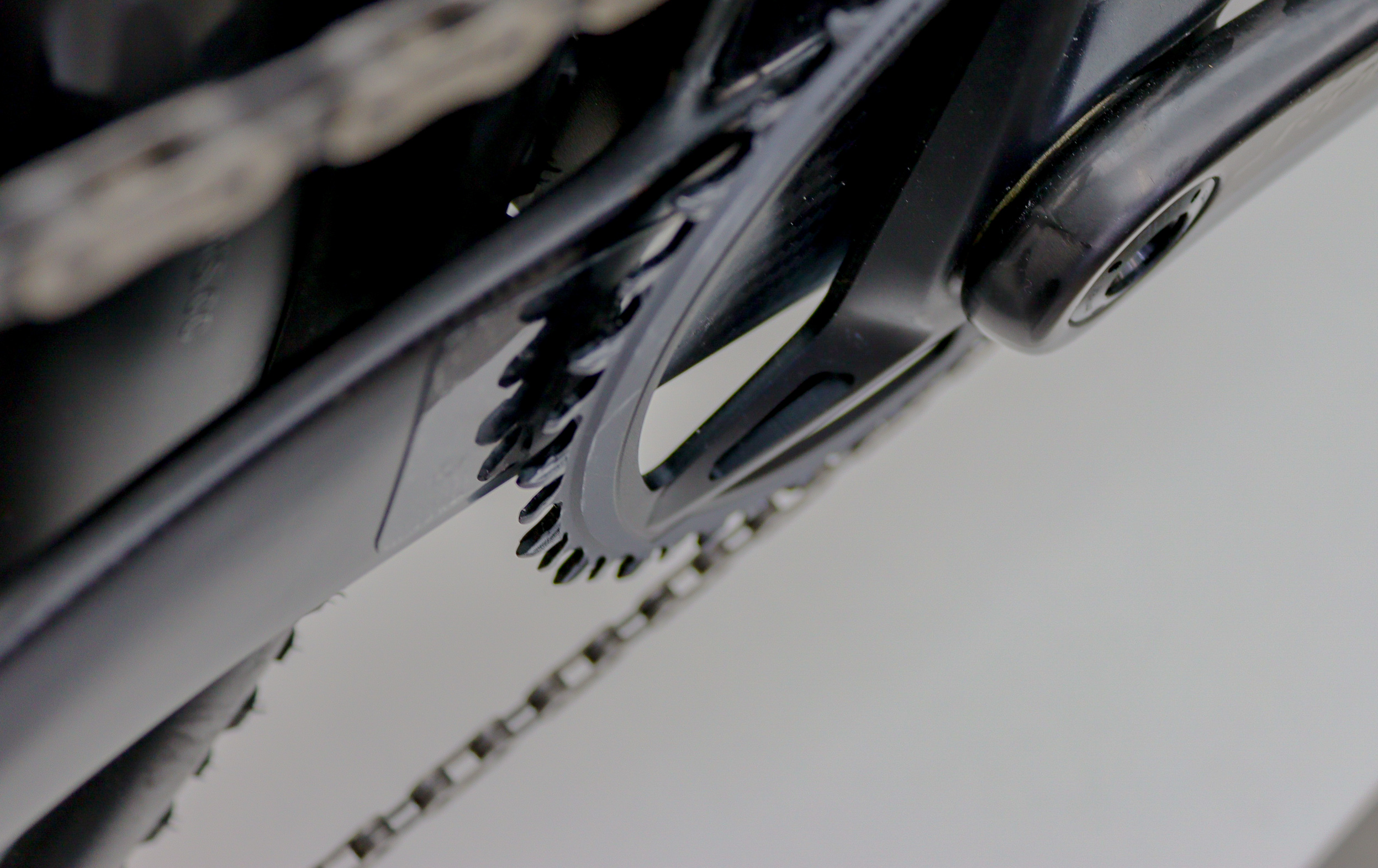
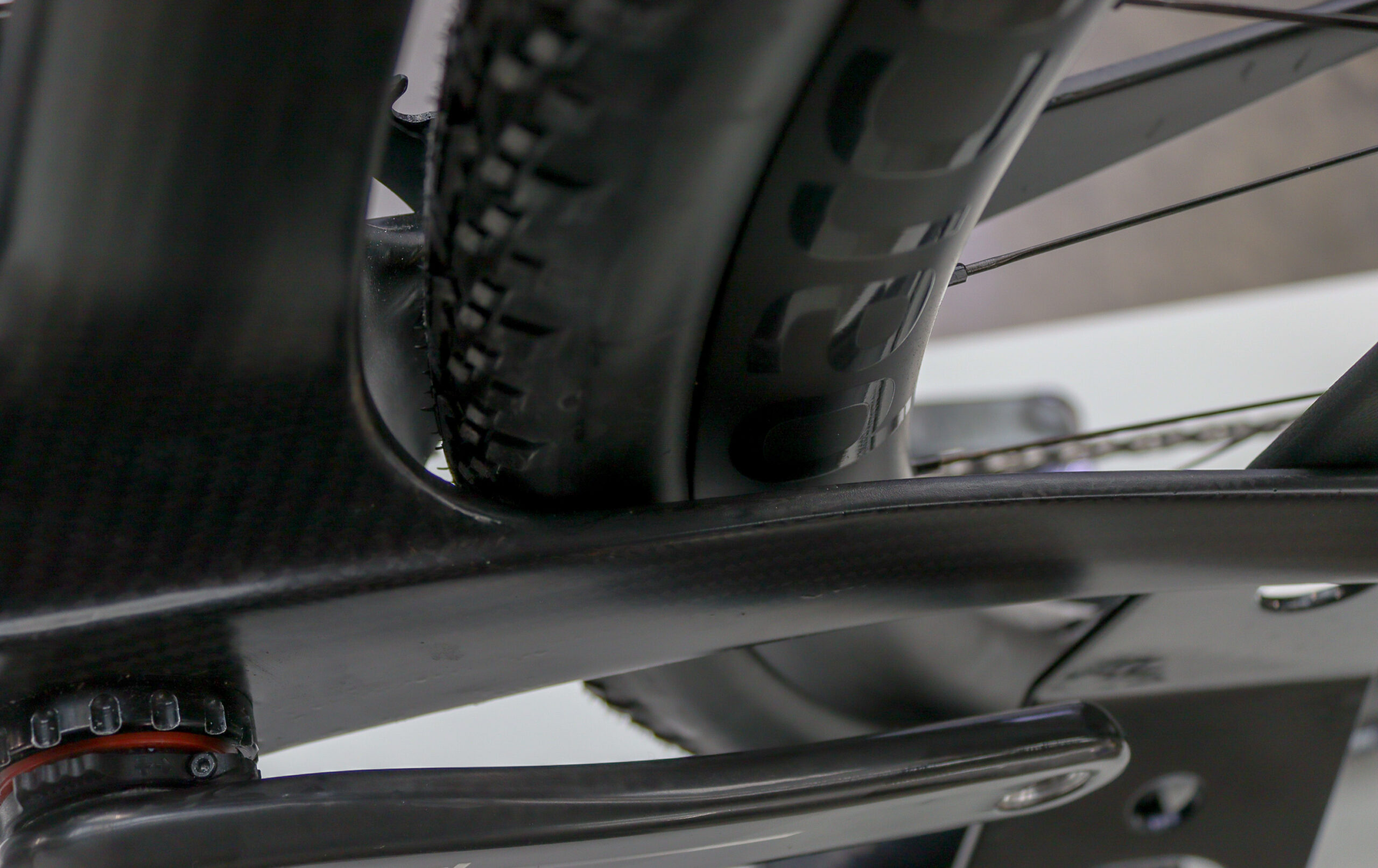
Meir expressed concern that the industry and media have placed excessive emphasis on clearance as a key metric for comparing bikes, when other design considerations may be just as, if not more, important for gravel riders. Despite that pressure, Meir stressed his preference is for a balanced approach to bike design that considers rider needs over arbitrary benchmarks, but did also ultimately include the 50 mm of clearance.
Another hot race gravel topic of late is geometry. Meir had commented as much and asked for feedback on that LinkedIn post mentioned earlier. Given the shorter deadline, Reap looked started by looking at the geometry of existing gravel race bikes like the BMC Kaius, Specialized’s Crux, and Canyon’s Grail as a starting point, aiming for a race-focused geometry rather than an adventure gravel bike. They did, though, leave some wiggle room by using a separately bonded rear dropout as they now work through the longer testing phase with this initial prototype.
Again, though, that’s where the 50 mm of tyre clearance brings a compromise, since a longer rear centre is required to fit the wider rubber but may in turn detract from the responsiveness Reap might have otherwise targeted. Ultimately geometry is a balance between what provides the best handling and what accommodates the larger tires, as the tire size itself can impact factors like stability and nimbleness.
Reap has managed to produce a rideable prototype, but it’s important to note that this isn’t a direct comparison to the process followed by mass production manufacturers. Yes, larger companies typically take much longer – from design to unveiling – but therein lies the distinction. While Reap showcased a new design and will now refine it with production bikes dependent on demand, we don’t often see this side of the process with bigger manufacturers. These companies generally wait until the design is fully tested (in design, then prototype, and then pre-production batch testing), and a stockpile of bikes is ready for distribution before unveiling a new model.
This isn’t to diminish either approach; both have their merits. Arguably, Reap’s more nimble approach could bring much-needed innovation spice to the market more frequently. As Meir explained, part of the rush to complete the design in such a tight window was driven by the rapidly shifting demands of the gravel racer.
This balancing act between design, geometry, tyre clearance, aero, and compliance is not unique to Reap, every brand faces the same difficult decisions in developing a new race bike. What is unique for Reap is its decision to answer all those questions in just seven weeks.
This is the beauty of being a small, nimble, family-run company: they can ask and answer these questions in rapid time. But with the Type 300 prototype now on display, the question remains: is it a glimpse into the future of gravel race bikes, and if so, how much of that future will make it to the production version? Then comes the most important question: How will this bold, innovative take on a gravel race bike fare when the starting gun goes off. Only time will tell.
Did we do a good job with this story?

